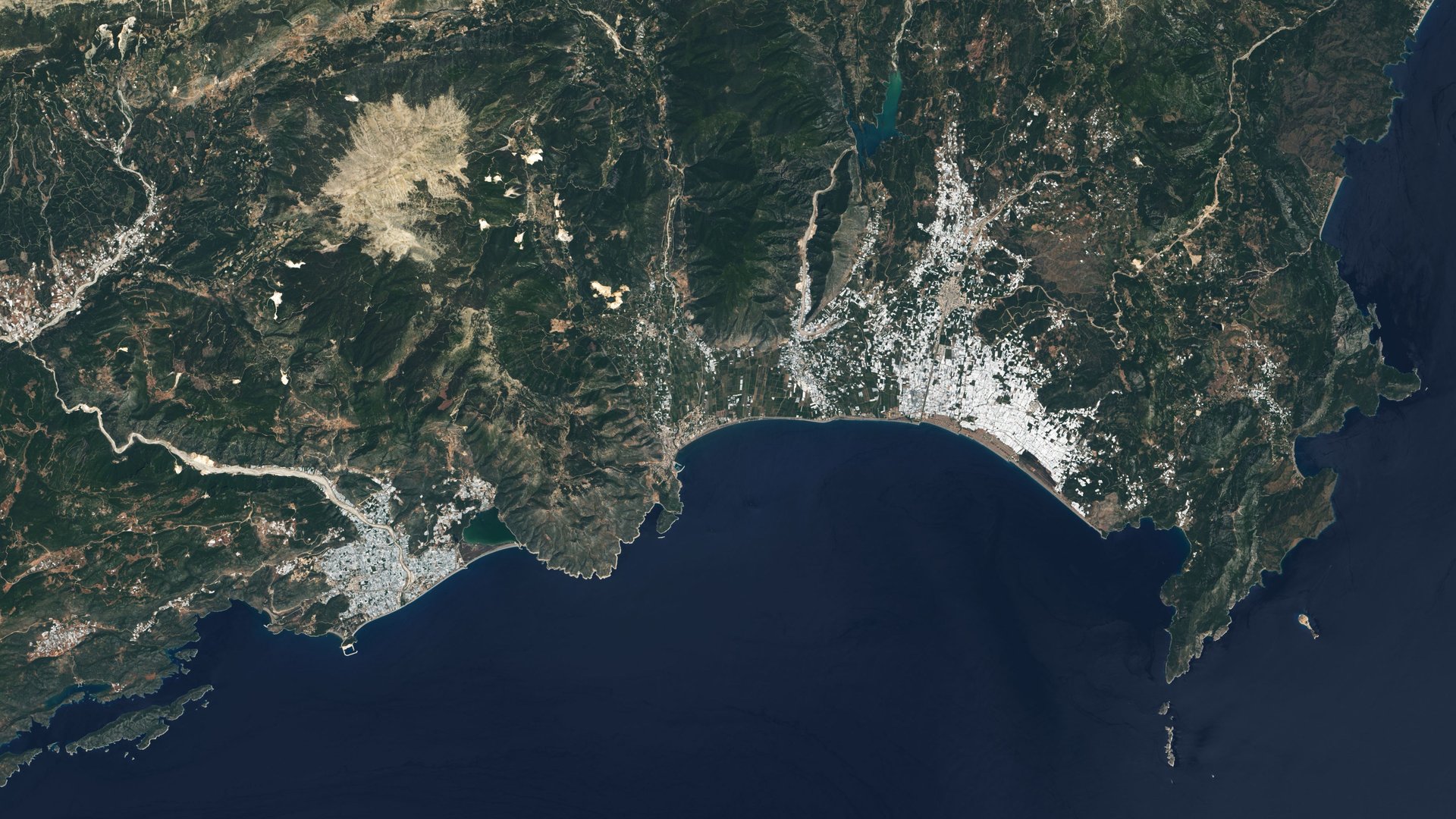Plastic use in agriculture is contributing to climate change
Plastic in fields—such as for mulching, enclosing hoop houses, and constructing greenhouses is drastically changing the rural landscape. The satellite image above of an area of Turkey processed by the NASA Earth Observatory shows much of the farmland is white because it is covered by plastic. NASA says South Korea, Spain, and Turkey all use significant amounts of plastic to produce food in greenhouses. In China, plastic-covered greenhouses make up about three percent of the farmland.


Plastic in fields—such as for mulching, enclosing hoop houses, and constructing greenhouses is drastically changing the rural landscape. The satellite image above of an area of Turkey processed by the NASA Earth Observatory shows much of the farmland is white because it is covered by plastic. NASA says South Korea, Spain, and Turkey all use significant amounts of plastic to produce food in greenhouses. In China, plastic-covered greenhouses make up about three percent of the farmland.
The area around Almería, Spain has the largest concentration of greenhouses in the world. The greenhouses span over 64,000 acres (260 sq km) and have been around for decades.
The shift to greenhouses was dubbed the “White Revolution” in South Korea and allowed the country to grow fresh vegetables year round. Now, it’s helped grow exports and stabilize prices (pdf).
The amount of plastic in the world is incomprehensible. Carbon emissions from plastic is estimated to outpace coal emissions by 2030. A recent report (pdf) by FAO forecasts a 50% increase in demand by 2030 of plastics used in agriculture.
Plasticulture and microplastics are ruining farmland
Plastic has found its way into many farming applications that have become integral to the industry. Relying on plastic in agriculture is derided as “plasticulture”. Plastic is cheap and makes tasks faster and lighter. Plastic film is used as a ground cover to prevent weed growth, and plastic containers trap moisture.
Plastic may have worthy benefits in the short term, but the long-term effects of using plastic each season cannot be ignored.
In particular, plastic films break down into microplastics, contaminating the soil. Only about 5% of plastic film is recycled according to Judith Enck, founder of Beyond Plastics and a former EPA regional administrator. Plastic films last for a season before they become unusable, as well as unrecyclable—leading to more single-use plastic each year. “We really need to look for non-plastic alternatives,” said Enck.
How does soil pollution affect plants?
Over time, plastic breaks down. When it’s smaller than five millimeters, it’s considered a microplastic. Nanoparticles of microplastics can enter the food chain. Studies already show microplastics are in air, water, and even human blood.
Chemicals in plastic can leach toxins into the soil particularly if the plastic is heated, exposed to sunlight for long periods, or worn-down. Plastic in soil can increase the pH and lower the microbial activity that keeps soil healthy and nutrient-rich.
Biodegradable alternatives to plastic in agriculture and gardening
There is little research exploring natural alternatives to ground-covering films and greenhouses covers. The results from using biodegradable mulch vary depending on the crop being grown and environmental conditions specific to a field. “Everything is extremely variable,” said Judith Conroy, a researcher at Coventry University in the UK.
Conroy is part of an effort in Europe to find agricultural plastic alternatives. Current options include corn and potato starches, and paper. But just because a material is biodegradable does not mean it’s sustainable.
There are few regulations on the use of plastic. “In order to be competitive with the farm up the road they kind of have no other choice,” said Conroy. “It sounds harsh to ban things, but you might well be making it more fair.”